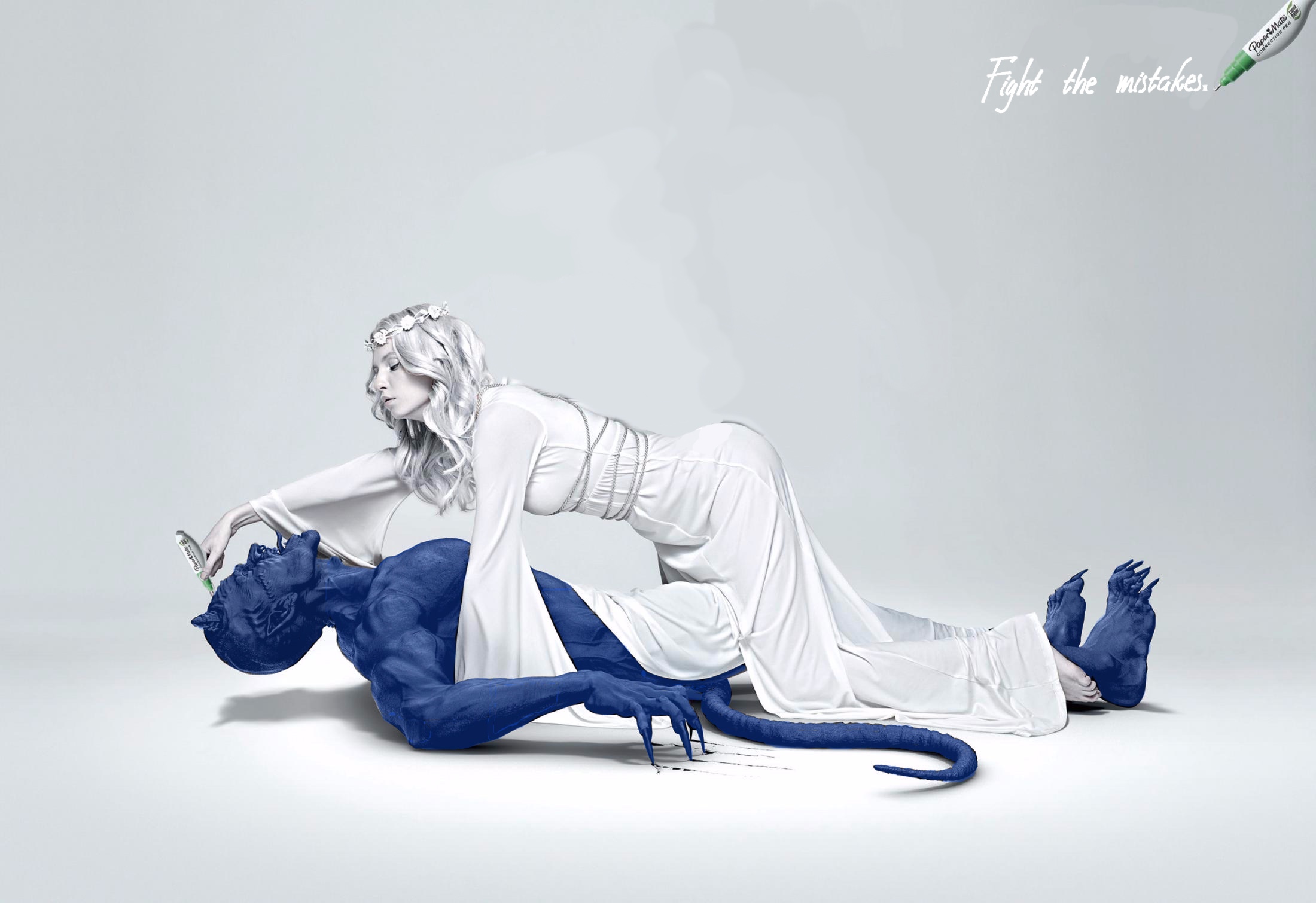PaperMate’s “Write the Wrong” advertisement.

I chose this advertisement for three reasons: the black “demon” figure, the white “angel” figure, and the words “Right the Wrong”.
The main issue with this advertisement that first popped out to me was the blackness of the demon figure. For centuries there has been the narrative the “black is bad”. The narrative is still prevalent in certain pigmentocracies around the globe, like Cuba and Brazil, because the darkness of your skin colour dictates the stigmatisation that you will endure and the lack of opportunities you have in your life. Black men have been demonised for centuries based on the pigmentation in their skin. Throughout history, they have been branded as delinquents, murderers, and rapists. I don’t understand how a brand can think it is acceptable to release a photo in which a pitch-black man is represented as demonic and evil.
The white angel figure is seen battling the scary black “demon”. The problem I have with this imagery is that white women are almost always depicted as pure, innocent, and angelic. The image also plays into the “white woman saviour” complex that often arrises in “white” feminism. This is also a very eurocentric depiction of an angel in which the viewer can make the assumption that the women are Caucasian based on her hair type and facial features. Throughout history, black men have been murdered because they were deemed “threatening” and a “risk” to white women’s “safety” and “innocence”. Emmett Till’s unjust murder happened because people believed that they were protecting “pure and innocent” white girl and women from the “evil” of a 14-year-old black boy.
I found this advertisment in a post from a white supremacy type of blog. The poster and commenters loved the “Write the Wrong” line because it closely resembles the “White is Right” phrase that is frequently shared on those kinds of platforms.
My Version.

The changes I made revolved around the reasons I picked the advertisement. The primary issue of the add was the insinuation that “blackness” was sinful and wicked. I changed the colour of the “demon” to blue, another prevalent ink colour, which hopefully changes the impression of white subjugating black and the prejudice against the darkness of pigment as “evil”.
Next, I focused on removing the angel wings from the woman to remove the virtuousness and angelic qualities around “whiteness”. I think there has been enough representation of white women as angels and ethereal. If my photoshopping skills were better, I would have changed her hair to a more Type 4 afro style. I settled for making the woman look somewhat mundane in comparison to the original advertisement. By adding the actual white-out product into the photo, I hoped that I would show that the product is dominating the “demon” rather than the woman herself. This was an attempt to take the narrative of “white” having control and giving that control to the white-out instead.
Final I changed the words from “Right the Wrong” to “Fight Your Mistakes” this was an attempt to take away any semblance of the white character’s moral superiority. The use of “your mistakes” is meant to reaffirm that this is an advertisement for a correctional writing tool, and that the advertisement is about the writer making corrections rather than the white character “righting a wrong”.